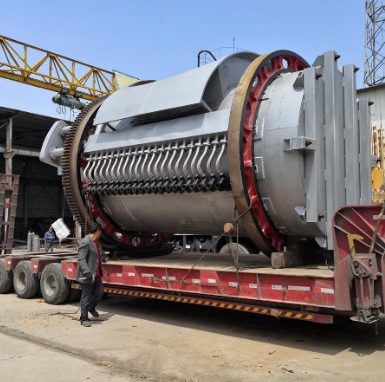PS converter furnace plays an important role in copper refining.
In non-ferrous metal smelting, especially copper and nickel smelting processes, the most commonly used are Isa furnace, Noranda furnace, flash furnace, and horizontal converter, also known as PS-converter, which is the main thermal device used to process matte to obtain crude copper and high nickel matte. PS converter is operated regularly. Therefore, the working environment temperature of its lining varies greatly, requiring the use of refractory products with rapid cooling and rapid cooling resistance. In addition to the horizontal converter, copper smelting furnaces can be divided into vertical and inclined types according to structure, but the horizontal type is still the main one. The shell of the converter is a steel plate structure, and the lining is made of magnesia-chromium refractory materials as the main raw material, supplemented by clay refractory bricks and ramming materials.

The horizontal converter is a cylindrical rotary blowing furnace. A furnace mouth for feeding, exhausting smoke, removing slag and unloading is set in the middle of the furnace body. On one side of the furnace body, a vent is set in the horizontal direction for blowing and oxygen supply. Since blowing is an oxidative exothermic reaction, the heat of blowing and the heat in the furnace are achieved through its own reaction heat. A thermal power device used to process matte to obtain crude copper and high-nickel matte. The horizontal converter is a metallurgical furnace used to treat matte during non-ferrous smelting. This method does not require any fuel and relies entirely on the oxidation of iron and sulfur in molten copper to generate heat.
During the blowing process, the furnace temperature fluctuated greatly. During blowing, the melt in the furnace flows with the air, causing a violent impact on the furnace lining. The slag and added quartz powder are extremely corrosive to the furnace lining. The mechanical impact and wear caused by furnace cleaning and tuyere maintenance will reduce the service life of the furnace lining. Therefore, the operating environment of the converter is very harsh. In particular, the furnace mouth, tuyere, and slag line are vulnerable parts of refractory materials and parts with weak masonry structure strength, which have high process requirements for furnace body construction. The synchronous life of the tuyere area and the slag line area is an important indicator to measure its actual operating life. Therefore, magnesia-chrome refractory materials such as magnesia-chrome bricks and fused composite magnesia-chrome bricks with good high temperature performance, slag resistance and thermal shock stability are generally used.
Blowing is an important process in pyrometallurgical copper smelting.